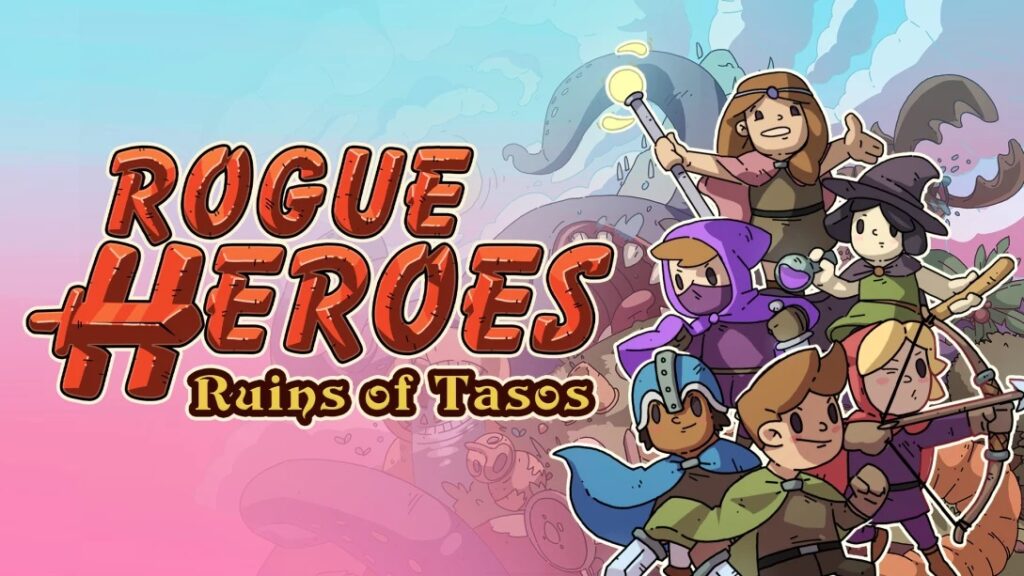
Roguelikes, roguelites, and roguelike derivatives are everywhere! As one of the biggest genres in indie gaming, it’s almost impossible to avoid some derivation of the roguelike genre. We all know how it works. Core gameplay repeats in a loop as permanent stat, weapon, or background skills build up, allowing for slow incremental progress and the eventual completion of a game. But it’s how that progress loop is designed that really makes a rogue-like title worth playing. Games like Dead Cells, The Binding Of Issac, and Rogue Legacy manage to master that loop system, drawing players in with the promise of ‘just one more game’. But there are a few games that manage to cross genres, incorporating rogue style play with a variety of other concepts to their success or failure.
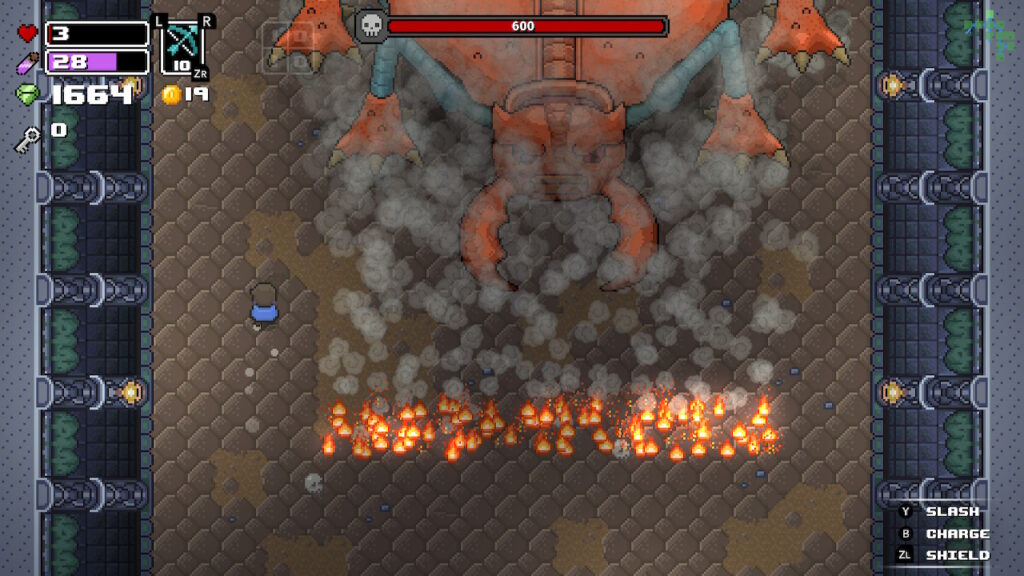
In case you haven’t guessed, Rogue Heroes: Ruins of Tasos from Heliocentric Studios and publisher Team17 is just one of those roguelikes. You are imbued with the power of the Goddesses to stop the rise of the evil Titans. Sounds pretty generic right? What it really means is that the Goddesses have made you functionally immortal and every time you die, you wake back up in bed like a fantasy sequel to Groundhog Day. Conveniently, your gold and gems come with you somehow too, and the townsfolk have definitely noticed (and very casually accepted) your frequent reincarnations.
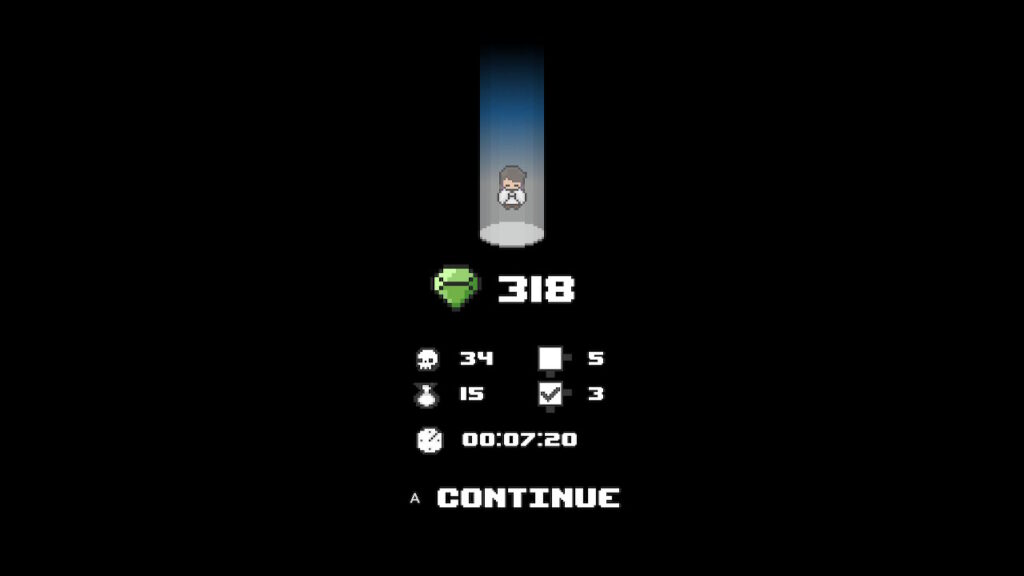
There’s a lot more to Rogue Heroes than just a big loop though. The game incorporates concepts from indie superstar Stardew Valley, allowing you to build and upgrade your town, farm, fish, and perform tasks for the townsfolk. Naturally, some of these will help you in your quest, but the idea that you can save the world and furnish your house isn’t exactly new. All of the changes you make endure from one reincarnation to the next, so don’t worry there. On top of that, the format is pure 16 bit Legend of Zelda, with a top down grid-style overworld that you have to explore. It’s even covered by a similar fog to Link to the Past on the map screen! And explore you shall. Smashing pots and digging up bushes should be old hat to anyone that has played games for a decent length of time but that doesn’t make it any less fun!
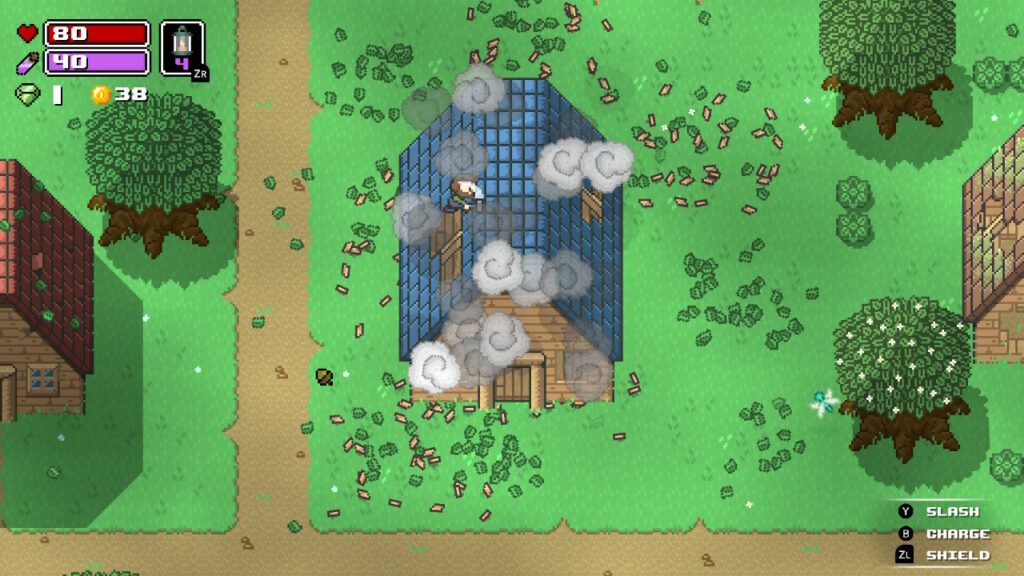
Eventually, you’ll make your way to the first dungeon and Rogue Heroes really gets going. While you’ve been collecting items in the overworld, the real currency of the realm is gems and they can only be obtained in the dungeons. There’s almost no chance of surviving a dungeon the first time through, so you’ll have ample time to learn the ins and outs of dungeon mechanics while respawning back and the village and spending all those hard-earned gems! There’s no sense in hoarding that loot either, as to enter a dungeon, you’re forced to give up any unspent gems. Dungeons are randomized each time you enter, forcing you to explore from scratch (though you’ll probably see most of the room configurations at some point). Eventually, you’ll build stores that allow you to upgrade weapons, stamina, tools, and even yourself! Find some thread and the tailor will make a new outfit for you, allowing you to switch jobs (and abilities) to one of the eight character classes in Rogue Heroes! From thieves to witches, this one has it all! Each class has different strengths and weaknesses, allowing for a variety of combat strategies based on your preferences and the dungeon design. The second dungeon for example has a ton of trap floors and the witch’s flying abilities could come in quite handy!

There are various areas all around the world of Rogue Heroes, from wintery mountain passes to spooky cemeteries and rolling forests to tribal mud flats. The game allows for a fairly large freedom of movement and you’re never really lost as to where to go. Convenient warp portals are placed around the world too, allowing you to zip from place to place once activated. The entire design of Rogue Heroes really caters to rewarding exploration and allowing for a wide freedom of choice in how to explore while still directing you towards your goals. Nothing makes you keep moving forward right away, but you certainly can! In fact, sticking around and staying overnight can net you some crops which you can sell, or leave you out in the rain for a thunderstorm at night if you simply can’t stop to rest.
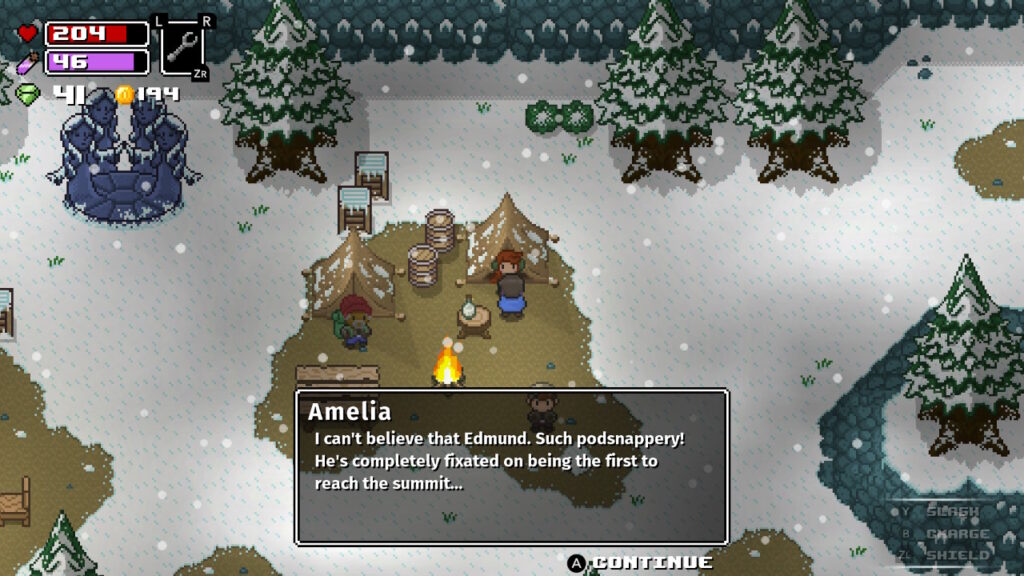
The controls in Rogue Heroes are tight and well-designed for the most part, allowing you to fight monsters and bushes with ease. The running mechanic runs you into a wall or bush a bit too often and your starting attack reach is a bit low, but things get moving pretty quickly. The only sticking point for controls is items quick selection, which forces you to laboriously scroll through a vast array of equipment, irritating when you’re in a nasty fight and just need that extra health potion! You’ll also find that each new area challenges your skills with enemies that attack differently. Don’t forget about those snakes in pots either! Dirty pot snakes. Grrr.
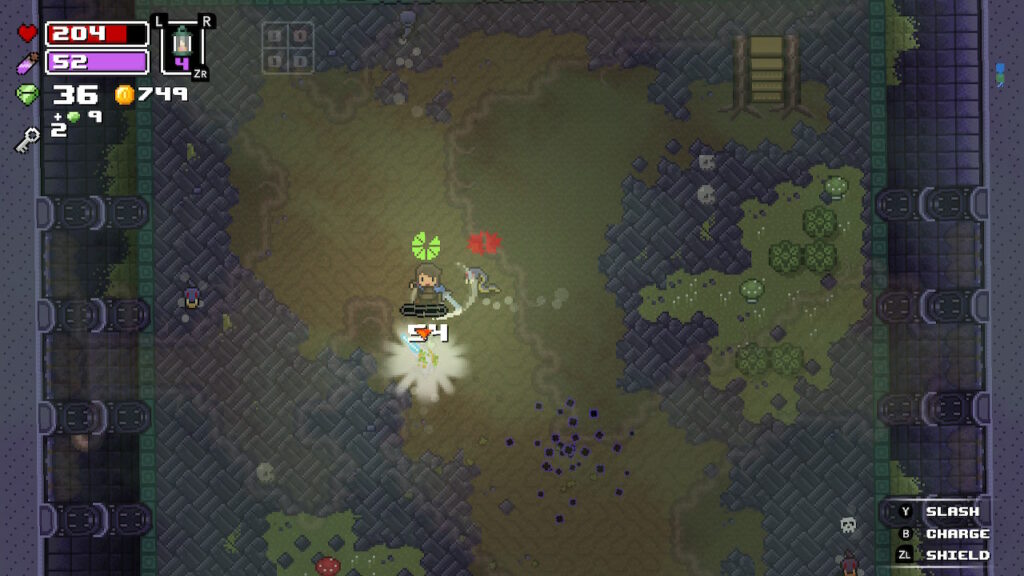
When you start playing Rogue Heroes, progress is slow and laborious. It can take hours to beat the first dungeon on your own, slowly grinding your way through. It’s a valid complaint and one that highlights a key design choice in the game. You see, Rogue Heroes isn’t designed just as a roguelike. It’s designed as a cooperative roguelike for up to four players simultaneously. Adding this co-op play into a roguelike setting allows for more complex dungeon choices and a variety of puzzle solving approaches depending on how many players you have. To be sure, the entire game can be played solo. It’ll take a fair bit longer and it’s a bit more frustrating, but it can definitely be done. However, it’s not designed to be. This is a title that’s definitely got cooperative play in mind. With each of you having a different character class, attack approaches and swarming enemies become opportunities for group coordinated attacks and bosses can fall rapidly.
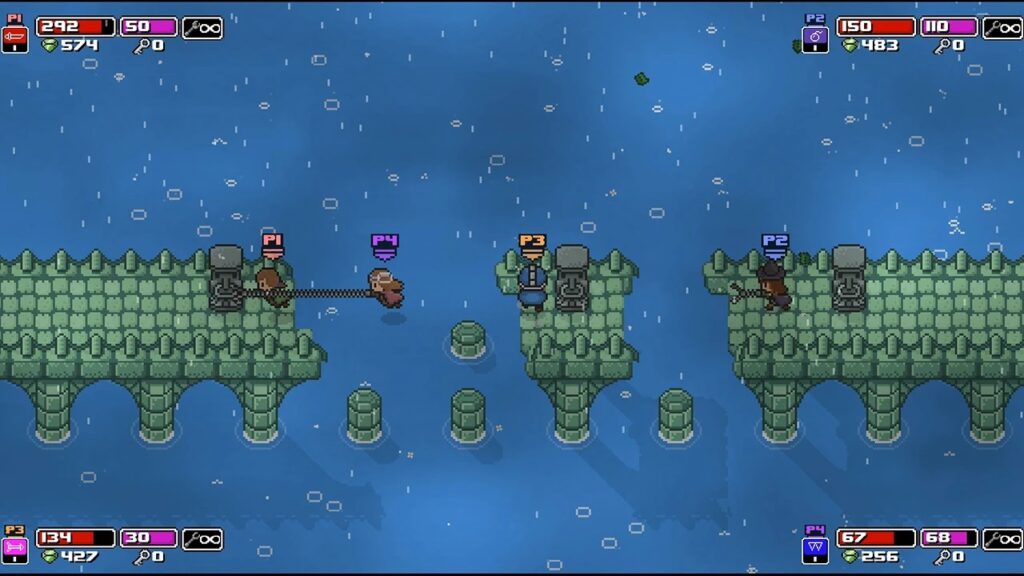
Rogue Heroes also has a charming, cartoonish design that falls somewhere between The Legend of Zelda: A Link to the Past and Adventure Time (minus the more extreme weirdness). It’s the perfect low-key fun design for some really interesting creatures and environments with just enough of a tribute to the 16 bit games of old to make older gamers feel reminiscent. This is a well-designed title with tons of unexpected graphical effects, neat floor layering, and a host of other unexpected surprises. Wait until you see the weather! The soundtrack is solid but fades quickly into the background, especially in dungeons where the slightest misstep can slaughter you quickly. It’s not a toe-tapping or anything but the music in Rogue Heroes is good and the sound effects are excellent. Everything about the game exudes quality on a level that is fairly uncommon in indie titles!
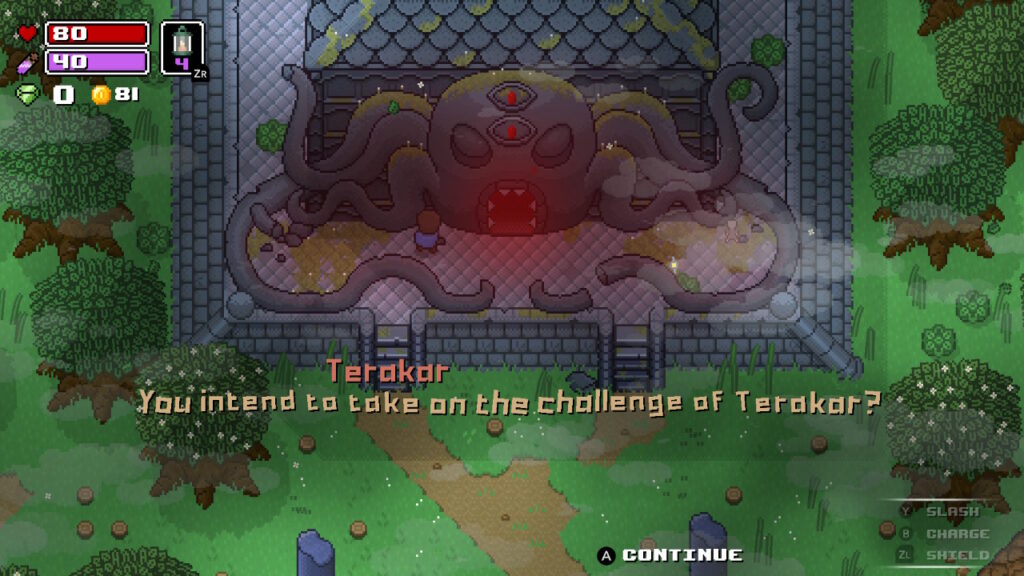
It’s impossible not to recommend Rogue Heroes: Ruins of Tasos. With a minimal story, outstanding gameplay, four player cooperative multiplayer, and a host of weird areas, this is an absolutely fantastic game! For a single player, the early game and the beginning of each subsequent dungeon end up being a bit more of a slog than they should be due to the multiplayer considerations, but it’s still not only eminently playable but a damned good time. For the $20 it’ll cost you, Rogue Heroes: Ruins of Tasos will provide hours of fun, both for gamers that like a difficult randomized Zelda-style challenge to their games and those that want to spend some time managing a town and doing a spot of light farming as well! Rogue Heroes: Ruins of Tasos is, quite simply, a must-buy title! Do not make the mistake of missing it! Now go stop those Titans from breaking the seals!

This review was based on a digital copy of Rogue Heroes: Ruins of Tasos provided by the publisher. It was played on a Nintendo Switch in both docked and undocked modes. Rogue Heroes: Ruins of Tasos is also available for PC on Steam!

